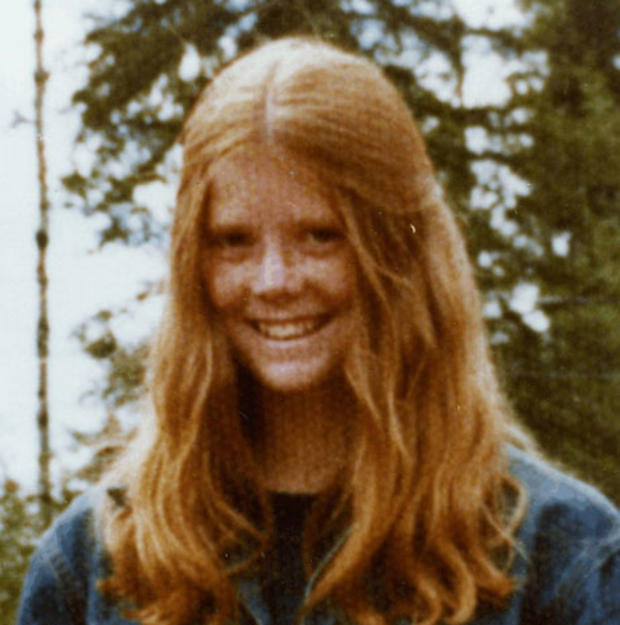48 Hours: Highway of Tears murder solved with improbable DNA sample
(CBS) How did the Royal Canadian Mounted Police working on the Highway of Tears cases in British Columbia uncover an American serial killer who may well turn out to be a hidden Ted Bundy?
It's all because Canadian investigators preserved a DNA sample at a time when most police departments had no idea what DNA was and how important it would later become in solving crimes.
The story begins in the summer of 1974 when 16-year-old Colleen MacMillen, who lived in the remote town of 100 Mile House in British Columbia, Canada, told her little brother Shawn that she was going out with friends.
"She just said, 'Don't tell mom I'm hitchhiking,' and she walked away," Shawn told CBS News Correspondent Peter Van Sant.
One month later, her body was found about 30 miles from the family home. For Colleen's two younger brothers, Shawn and Keven, and their family, it was an unspeakable tragedy.
"It's a lifelong disaster is what it is," Kevin said. "It was sad the day it happened and we're sad today and we'll be sad till the day we die."
Colleen became another victim along Canada's Highway of Tears, officially Highway 16 which cuts across British Columbia and is a major east-west road used by truckers and loggers.
Over the years, so many young women (the official list is 18 but locals say there are many more) either went missing or were found murdered near the highway that the Royal Canadian Mounted Police -- the RCMP -- created a special task force in 2005. It was a monumental task, culling through investigative reports that date back to 1969 and stretch over the past four decades. The task force spends $6 million annually to investigate the killers but had no luck solving any cases until this year. And Colleen was the key.
When her body was found back in 1974, police also found her blouse, and on that blouse was DNA.
Of course, there was no DNA testing in 1974 (DNA was not used in a criminal cases until 1986, according to most reports) but luckily for all, the RCMP preserved that blouse in a careful way. As the decades passed and DNA became a key tool of police work, investigators took a second look at that sample and in 2007 entered it various databases of known criminals. No concrete hits came back, but police were told that the shirt contained the DNA of an unknown male.
Whoever he was, he was likely Colleen's killer.
As DNA technology advanced, scientists were able to enhance smaller and older samples and this year, the forensic investigators assigned to the RCMP learned of a new procedure. That sample from Colleen's blouse was enhanced and sent to Interpol, whose database encompasses criminals from all over the world, including the United States.
In May, Interpol informed the RCMP that it had received a positive hit from the sample on Colleen's blouse - it belonged to an American roofer named Bobby Jack Fowler who had tried to kidnap and kill a woman back in 1995. The woman escaped by jumping naked out a second story window with a rope around her foot. Fowler was arrested at the scene. It was the oldest hit on a DNA sample in Interpol history.
Now, this violent roving roofer was being linked to Colleen MacMillen, a 16-year-old strawberry blonde from another country.
The RCMP flew to Oregon where Fowler had a criminal record for kidnapping and attempted murder, and they spoke to American investigators. More investigation led the Canadian police to conclude that Fowler, a twice divorced father of four with a violent past, was the person who killed Colleen MacMillen. He led a nomadic work life and he was in Canada several times in the early '70s.
Investigators concluded that he'd also likely killed two other young women on the official Highway of Tears list - Pamela Darlington and Gale Weys, both 19 years old. They were both murdered in 1973, one year before Colleen MacMillen. Circumstances link Fowler to those crimes, not DNA.
With the information provided by the RCMP, Newport, Oregon investigator Ron Benson took a fresh look at Fowler. As of this writing, Fowler is suspected of murdering seven people in Oregon and others across the United States.
Investigators believe he may have killed up to 20 people in all across the U.S. and Canada, and some have compared him to infamous serial killer Ted Bundy ... all because of one carefully preserved blouse.
Paul LaRosa is a producer for CBS News' "48 Hours."

